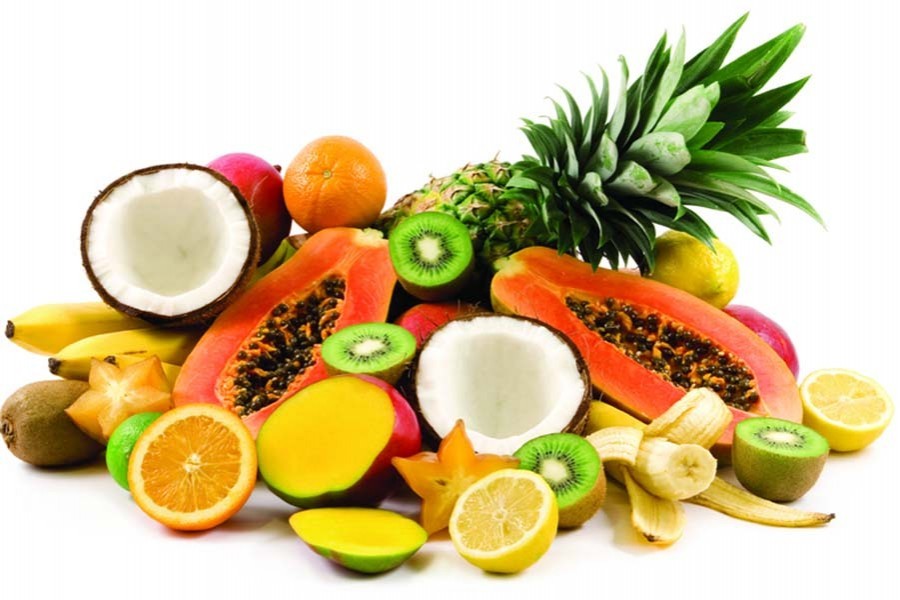
Published :
Updated :

The fast increase in the production of exotic fruits and their supply to the urban markets speak of a vital fact --- people in the country are not used to shutting themselves off. In the act of welcoming things from outside, people of Bangladesh can find for themselves an exclusive place. It becomes evident when it comes to purchasing and consuming locally grown overseas fruits. The eagerness with which they buy mangoes or jackfruit is clearly seen also in their purchase of fruits like strawberries, rambutan or dragon fruit --- grown in Bangladesh. It's a new phenomenon. The names of the latter fruits were strange to the general city-dwelling people even one-and-half decades ago. Now they are commonplace like Malta orange, grapes etc. The fruits are now largely cultivated in Bangladesh. The Saudi dates are expected to occupy soon a significant place in the country's collection of foreign fruits.
Growing foreign crops began in the country in the recent times with vegetables. It was followed by flowers and fruits after a hiatus. Coming to vegetables, broccoli, capsicum, lemon grass and other products are now household items. They are abundantly available in the kitchen markets. The first batch of locally cultivated fruits was dominated by strawberries. Seeing their commercial prospects, hundreds of young enterprising farmers engaged in the production of various other fruits. Apart from all kinds of support extended by the Department of Agricultural Extension (DAE), the farmers now receive from it advice regarding production practices. Bangladesh Agricultural University (BAU), Mymensingh, also came forward to enrich the farmers' expertise. With a country's fruit yields limited to age-old mangoes, litchis, jackfruit, pineapples, bananas, papayas etc, the addition of foreign fruits has impressively expanded its fruit basket overnight.
With the nature-dictated rules constantly shaping the botanical world, the one of Bangladesh has also kept changing without pause. Entry of the pollens of alien fruit species through wind, insects and animals has been on for centuries. It has resulted in the growth of newer types of fruits. This long-drawn-out natural process apart, humans also played a great role in bringing new fruit seeds and saplings to the country. In accordance with the universal pattern, people of the country finally developed their fondness for a few fruits after overcoming their initial awkwardness. Following the relentless efforts by BAU, four locally grown Southeast Asian and Chinese fruits --- rambutan, santol, persimmon and dragon fruit have been proved worth exporting to that vast region. Upon being in stiff competition with the Indian, Chinese, Thai and Indonesian mangoes, the prospects for smooth export earnings from these fruits are indeed great news.
The magic of the increasing harvests of the exotic fruits lies with the fertile and rich quality of Bangladesh soil. Sediments of major upper riparian rivers constitute 80 per cent of soil in the country. The rest 20 per cent is composed of Tertiary and Quaternary sediments of hills (12 per cent) and uplifted Pleistocene Terrace (8 per cent). Moreover, scientists have identified about 500 soil series in the country. Such a rich soil texture with amazing varieties in a small country can assure of production of any type of crop. Many ancient fruits have disappeared from the land for natural reasons. A lot of others have made their entries and got assimilated with local fruits. The fresh entrants struggle to find their footing. The need of the hour, however, is the soil must be preserved --- especially the vital top soil.


 For all latest news, follow The Financial Express Google News channel.
For all latest news, follow The Financial Express Google News channel.